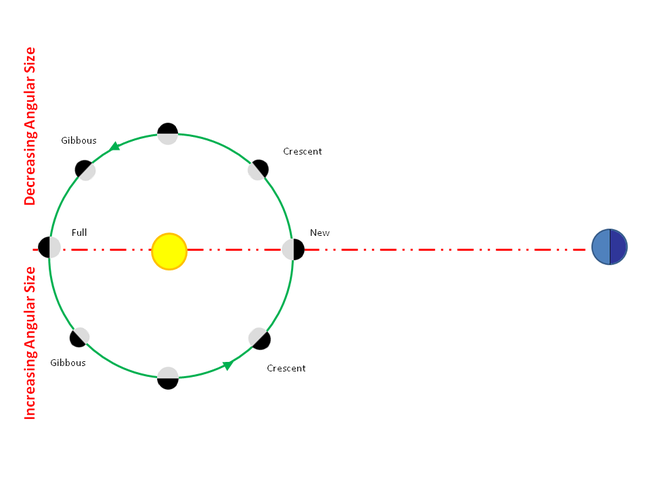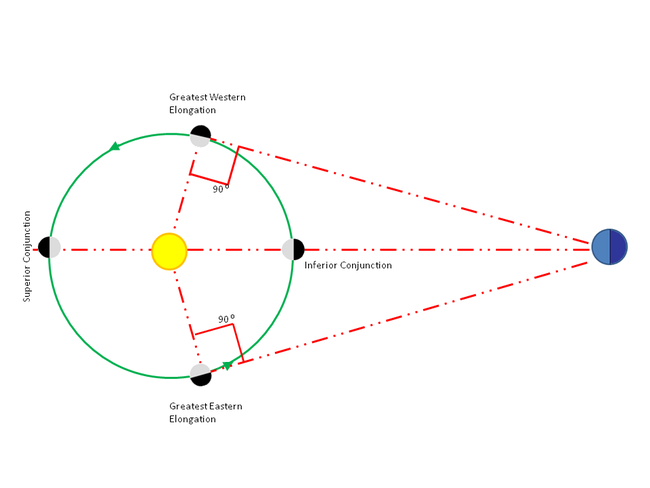Distant Nature: Astronomy Exercises
Objectives
In this exercise, you will observe Venus in its orbit around the Sun and
the changes in Venus' illumination as its position relative to the Earth and
the Sun changes over time. Also you will observe the difference between Venus's
Orbital (Sidereal) period and its Synodic Period.
Equipment/Materials Needed
Stellarium, scientific calculator.
Subject Introduction
As Venus's position changes relative to the Earth and Sun, in its orbit
around the Sun, its illumination changes in what is referred to as the Phases
of Venus. While most of us have seen the phases of the Moon (see the Distant
Nature exercise on the Phases of the Moon), it is not possible to see the
phases of Venus without some optical aid. In fact, the first person to observe
the phases of Venus was Galileo, in 1610. Take a close look at Figure 1.

Basic Phases of Venus
Venus orbits the Sun with a repeated period, as all planets do. The time to make one complete orbit is called the Orbital period, or the Sidereal period. For Venus to complete one complete phase cycle is different and is called the Synodic period. Unlike the Moon's orbit around the Earth, there is quite large difference in Venus' Synodic period versus its Orbital period.
- Orbital period
- The Orbital period is the time it takes an object to complete one full orbit about its companion object, relative to the stars.
- Synodic period
- The Synodic period is the time it takes an object to complete one full orbit about its companion object, relative to a pair of other objects. (for Venus, the two objects are the Earth and the Sun)
The other key configurations of the Sun, Earth, Venus orbital positions are
shown in Figure 2. These positions were key for early astronomers to not only
help solidify the heliocentric model for the solar System, but to actually
allow them to calculate details about their orbit periods and shapes. Observe
Figure 2.

Key Sun, Earth, Venus Positions
- Superior Conjunction
- When an inferior planet is on the Earth-Sun line, on the far side of the Sun
- Inferior Conjunction
- When an inferior planet is on the Earth-Sun line, on the near side of the Sun
- Greatest Eastern Elongation
- The greatest angular separation of an inferior planet to the East of the Sun (seen around sunset).
- Greatest Western Elongation
- The greatest angular separation of an inferior planet to the West of the Sun(seen around sunrise).